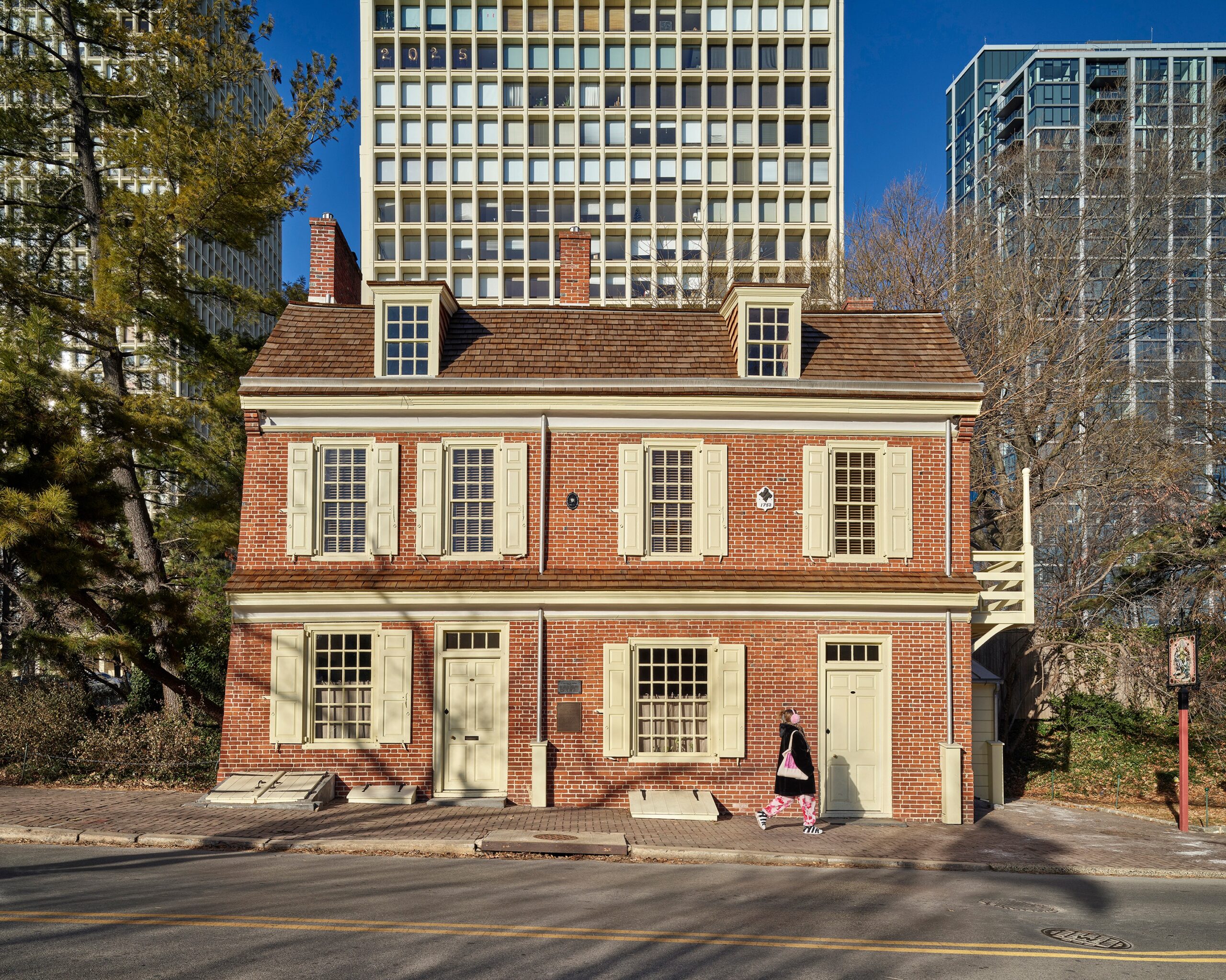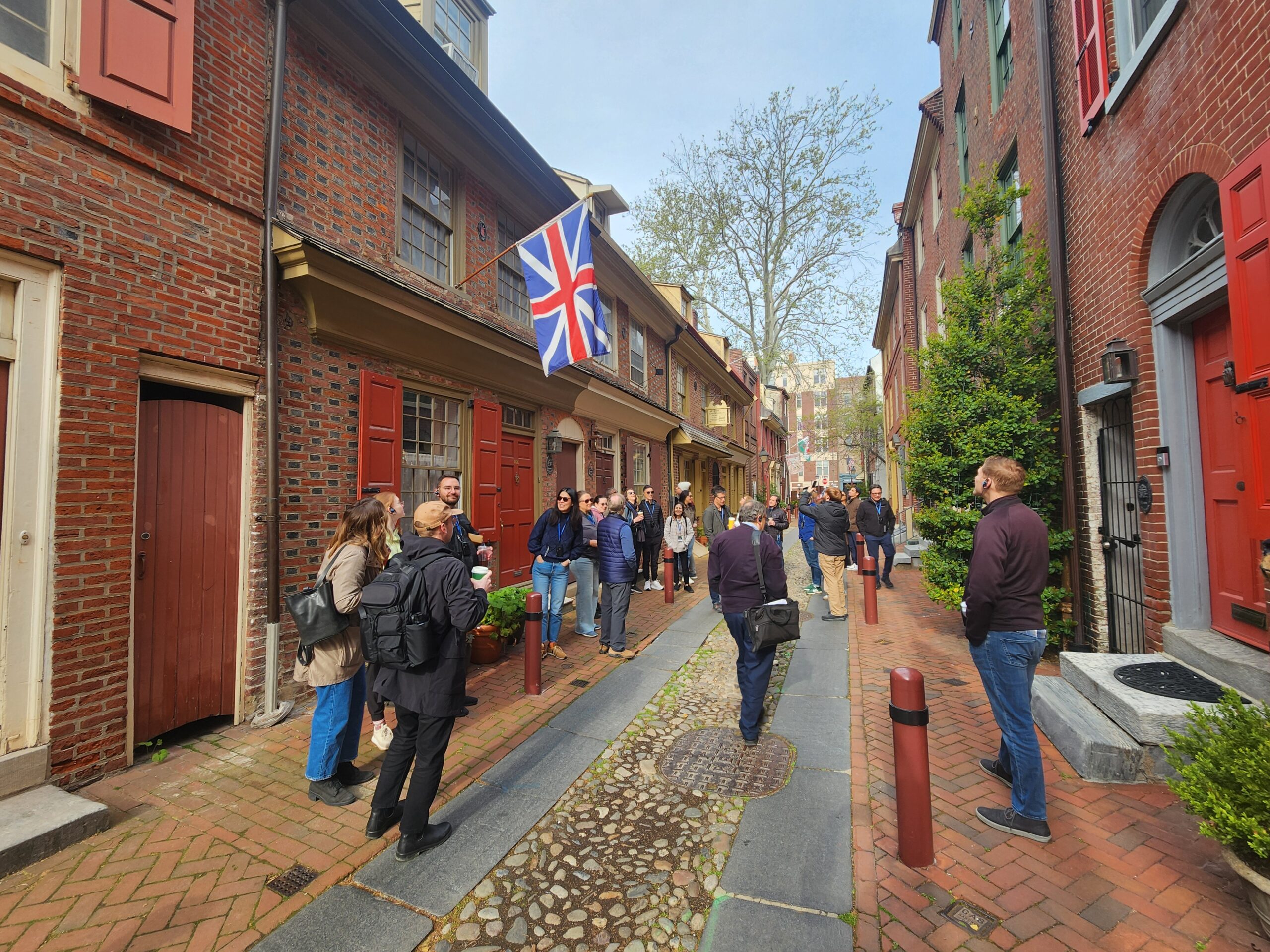We’re upgrading our systems to better serve you!
Introducing our new user portal where you can manage your membership, contact information, purchases and more. If you are a current member, please start here and enter your email to receive a “Log in Link” prior to purchasing event ticket.
Note: Be sure to use the email associated with your membership!
Need help? Click here to learn more.
Upcoming Neighborhood Walking Tours
Text the word tours to 1 (267) 380-2441 to check meeting locations for upcoming tours and for any weather related cancellation notices
Bella Vista
Bella Vista (“beautiful view”) is a vibrant, historic residential neighborhood and home to the famous Ninth Street Market, AKA the Italian Market, one of the nation’s oldest continuously operating open-air marketsBella Vista (“beautiful view”) is a vibrant, historic residential neighborhood and home to the famous Ninth Street Market, AKA the Italian Market, one of the nation’s oldest continuously operating open-air markets. The tour will highlight the lively neighborhood’s architecture, diverse ethnic mix, and social changes.
East Falls
East Falls transitioned from a small fishing outpost along the Schuylkill River to a major mill town in the 1800s, but the last mills closed almost a century ago. As the mills were closing, the neighborhood developed into a ‘suburb’ within PhiladelphiaEast Falls transitioned from a small fishing outpost along the Schuylkill River to a major mill town in the 1800s, but the last mills closed almost a century ago. As the mills were closing, the neighborhood developed into a ‘suburb’ within Philadelphia. This tour will look at the changes from 1900 to the mid-century with a walk through the Tudor District, Oak Road, and School House Lane highlighting the highways and byways in between.
Littlest Streets East of Broad
Stroll a charming labyrinth of streets west of Washington Square, a village-like setting right in the heart of Center City, developed in the mid 19th centuryStroll a charming labyrinth of streets west of Washington Square, a village-like setting right in the heart of Center City, developed in the mid 19th century. Experience an intimate “hierarchy of streets” where the larger style-conscious houses are on the main streets, the smaller scale houses built for the aspiring middle class are on the middle-sized streets, and what was worker housing is on the smallest alleys. See Philadelphia as a “livable” city at its best.
A Man Full of Trouble Tavern and Museum
A Man Full of Trouble, built in 1759, is Philadelphia’s only surviving colonial tavern
A Man Full of Trouble, built in 1759, is Philadelphia’s only surviving colonial tavern. Recently restored and honored in this year’s Preservation Achievement Awards, it now operates as a tavern museum, with a working bar on the first floor. Upstairs is a three-room museum that tells the stories of the tavern and the “urban renewal” of the Society Hill neighborhood, along with some early Philadelphia and revolutionary history.
Join owner Dan Wheeler who purchased A Man Full of Trouble in 2021 from the University of Pennsylvania, on a tour of the tavern and and stay for a drink after!
Northern Liberties
William Penn stipulated that 10,000 acres north of the original city become “liberty lands.” Once home to many of the city’s breweries, this funky, culturally diverse neighborhood today is the home of many artists and writersWilliam Penn stipulated that 10,000 acres north of the original city become “liberty lands.” Once home to many of the city’s breweries, this funky, culturally diverse neighborhood today is the home of many artists and writers. See the old and the new and make note of the many little neighborhood eateries along the way.
Central Bryn Mawr
The quiet country village was transformed in the 19th century by the construction of the paved Lancaster “turnpike” and various railroads, which facilitated nearby real estate speculation, including Frank Furness’ Bryn Mawr Hotel (now Baldwin School), several imposing churches, and the area’s characteristic large and comfortable housesThe quiet country village was transformed in the 19th century by the construction of the paved Lancaster “turnpike” and various railroads, which facilitated nearby real estate speculation, including Frank Furness’ Bryn Mawr Hotel (now Baldwin School), several imposing churches, and the area’s characteristic large and comfortable houses. This tour will also explore the sylvan campus of Bryn Mawr College, including buildings by Addison Hutton, Cope & Stewardson, Mellor Meigs & Howe, and Louis Kahn.
Skyscrapers Old and New
Penn Center, one of the country’s most acclaimed examples of 20th century, post World War II urban renewal, is a lasting legacy of Edmund Bacon and the Philadelphia City Planning CommissionPenn Center, one of the country’s most acclaimed examples of 20th century, post World War II urban renewal, is a lasting legacy of Edmund Bacon and the Philadelphia City Planning Commission. Learn how this world-famous city planner based this commercial development complex on William Penn’s vision that Market Street would be a commercial thoroughfare and see two generations of commercial architecture: Modern & Post-Modern.
Around Washington Square
Walk around one of William Penn’s original planned public parksWalk around one of William Penn’s original planned public parks. Learn how this square served as a burial ground for over 1,200 Revolutionary War soldiers, then as a potter’s field before receiving its present name in 1825. See The Athenaeum, the first Italian Renaissance building in the US, and learn how the Square became home to the publishing industry in the early 20th century. Today, many of the former office buildings are being transformed into residences as Washington Square serves as an important gateway to the nearby residential Society Hill neighborhood.
Old City
Explore colonial Philadelphia and walk some of its original streetsExplore colonial Philadelphia and walk some of its original streets. See famous Elfreth’s Alley, the oldest continuously occupied street in the US, and experience the walking/mercantile city, as well as a later generation of Victorian structures. Learn how this area remained the center of Philadelphia’s commercial, retail and governmental activities until the city finally moved “westward” to Center Square in the mid/late 19th century.
Spruce Hill Victoriana
Walk tree-lined streets graced with homes that are crowned with Italianate towers and Queen Anne Revival gablesWalk tree-lined streets graced with homes that are crowned with Italianate towers and Queen Anne Revival gables. Hear how public transportation encouraged development of this West Philadelphia neighborhood as a streetcar suburb.
Callowhill Cross Section
Just north of Center City, Callowhill Street and nearby blocks tell the story of Philadelphia’s emergence as an industrial “Workshop of the World” and the many strategies for revival after manufacturing declinedJust north of Center City, Callowhill Street and nearby blocks tell the story of Philadelphia’s emergence as an industrial “Workshop of the World” and the many strategies for revival after manufacturing declined. We will find traces of railroads, see how factories have been adapted for new purposes, and encounter unexpected outcomes of urban renewal. Our walk will include notable industrial and commercial architecture as well as parks, public art, and new construction projects that are enlivening the post-industrial landscape.
Bankers’ Row
In the early years of the new Republic, Philadelphia was the nation’s financial capital, home to the first stock exchange (1790), the Bank of the United States, the US Mint, the first securities exchange, the first commodities exchange, and other early banking and insurance institutionsIn the early years of the new Republic, Philadelphia was the nation’s financial capital, home to the first stock exchange (1790), the Bank of the United States, the US Mint, the first securities exchange, the first commodities exchange, and other early banking and insurance institutions. The epicenter of this activity was Chestnut Street in Old City, where important early institutions were housed in architectural treasures, ranging from Greek Revival “temples” to later brick and limestone buildings such as The Bourse Building and the US Customs House. Explore the history of this important part of Philadelphia by visiting notable architectural landmarks, visible evidence of Philadelphia’s early financial prominence.
Littlest Streets Fitler Square
Experience yet another intimate neighborhood within Center City, just southwest of Rittenhouse Square west of Broad StreetExperience yet another intimate neighborhood within Center City, just southwest of Rittenhouse Square west of Broad Street. Learn about the early Irish settlers and other immigrants who first settled here and about their industrial ties to the nearby Schuylkill River.
Up and Over the Ben Franklin Bridge
You’ve crossed it by car or viewed it from afar; now experience this magnificent bridge from a whole new perspective! Walk from Philadelphia to Camden with our guide to learn about the history and construction of what was once the longest suspension bridge in the worldYou’ve crossed it by car or viewed it from afar; now experience this magnificent bridge from a whole new perspective! Walk from Philadelphia to Camden with our guide to learn about the history and construction of what was once the longest suspension bridge in the world. Look down on the mighty Delaware River between Pennsylvania and New Jersey. Get acquainted with the past, present and future of waterfront development on both sides of the river. At the end of the tour, walk through the Rutgers-Camden campus for a return trip to Center City on the PATCO Hi-Speedline (not included in price).
Chestnut Hill
Take a leisurely stroll through this bucolic “Garden City” neighborhood, a suburban setting within the city limitsTake a leisurely stroll through this bucolic “Garden City” neighborhood, a suburban setting within the city limits. Learn how the Pennsylvania Railroad extension to this area, spearheaded by Henry Howard Houston in the 1880s, created this style-conscious development and later, with his son-in-law, George Woodward, continued it into the 1920s. Explore this haven of late Victorian, Arts & Crafts, English Cotswolds and Modern residences and see how it emerged as a desirable and complete neighborhood.
Beaux-Arts
Explore outstanding examples of late 19th century and early 20th century architecture influenced by the Ecole des Beaux-Arts in ParisExplore outstanding examples of late 19th century and early 20th century architecture influenced by the Ecole des Beaux-Arts in Paris. From intimate residences in Rittenhouse Square to meticulously designed public spaces, see why Philadelphia is often described as the “Paris of the US.”
Art Deco
This popular early 20th century style, synonymous with the Jazz Age, has been described as having one foot in the past and one foot in the futureThis popular early 20th century style, synonymous with the Jazz Age, has been described as having one foot in the past and one foot in the future. Its sleek appearance foretells the debut of Modernism while its use of Mayan and Aztec motifs echoes the past. Among Philadelphia’s outstanding examples featured on this walk is the flamboyant WCAU Building on the 1600 block of Chestnut Street.

